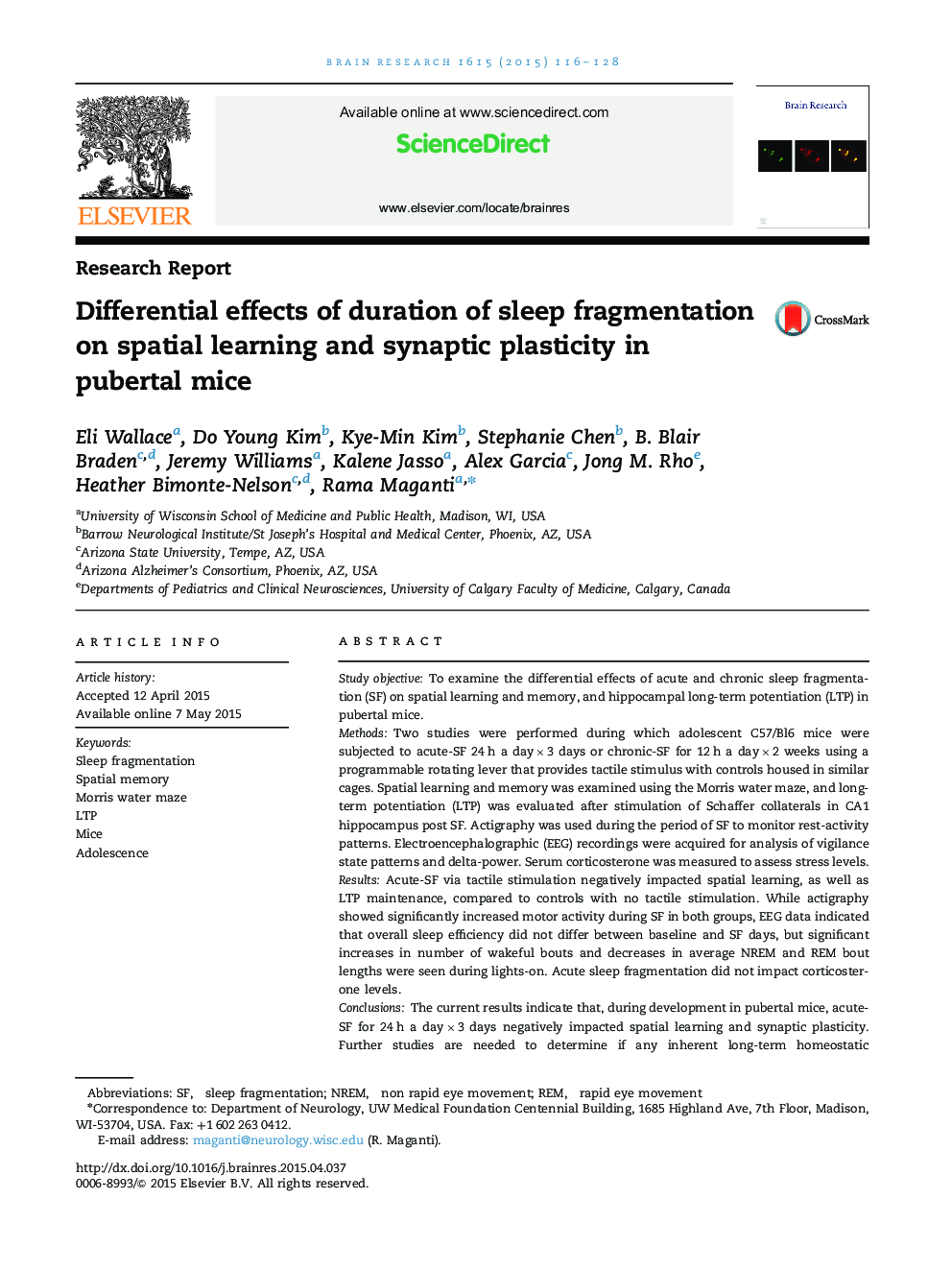| Article ID | Journal | Published Year | Pages | File Type |
|---|---|---|---|---|
| 4323780 | Brain Research | 2015 | 13 Pages |
•Acute sleep fragmentation impaired LTP maintenance and spatial learning.•Chronic sleep fragmentation in our model did not impact LTP and spatial learning.•Sleep efficiency did not differ between baseline and fragmentation days.•Decrease in NREM and REM bout lengths was noted on fragmentation days.•Acute sleep fragmentation did not impact corticosterone levels.
Study objectiveTo examine the differential effects of acute and chronic sleep fragmentation (SF) on spatial learning and memory, and hippocampal long-term potentiation (LTP) in pubertal mice.MethodsTwo studies were performed during which adolescent C57/Bl6 mice were subjected to acute-SF 24 h a day×3 days or chronic-SF for 12 h a day×2 weeks using a programmable rotating lever that provides tactile stimulus with controls housed in similar cages. Spatial learning and memory was examined using the Morris water maze, and long-term potentiation (LTP) was evaluated after stimulation of Schaffer collaterals in CA1 hippocampus post SF. Actigraphy was used during the period of SF to monitor rest-activity patterns. Electroencephalographic (EEG) recordings were acquired for analysis of vigilance state patterns and delta-power. Serum corticosterone was measured to assess stress levels.ResultsAcute-SF via tactile stimulation negatively impacted spatial learning, as well as LTP maintenance, compared to controls with no tactile stimulation. While actigraphy showed significantly increased motor activity during SF in both groups, EEG data indicated that overall sleep efficiency did not differ between baseline and SF days, but significant increases in number of wakeful bouts and decreases in average NREM and REM bout lengths were seen during lights-on. Acute sleep fragmentation did not impact corticosterone levels.ConclusionsThe current results indicate that, during development in pubertal mice, acute-SF for 24 h a day×3 days negatively impacted spatial learning and synaptic plasticity. Further studies are needed to determine if any inherent long-term homeostatic mechanisms in the adolescent brain afford greater resistance to the deleterious effects of chronic-SF.
